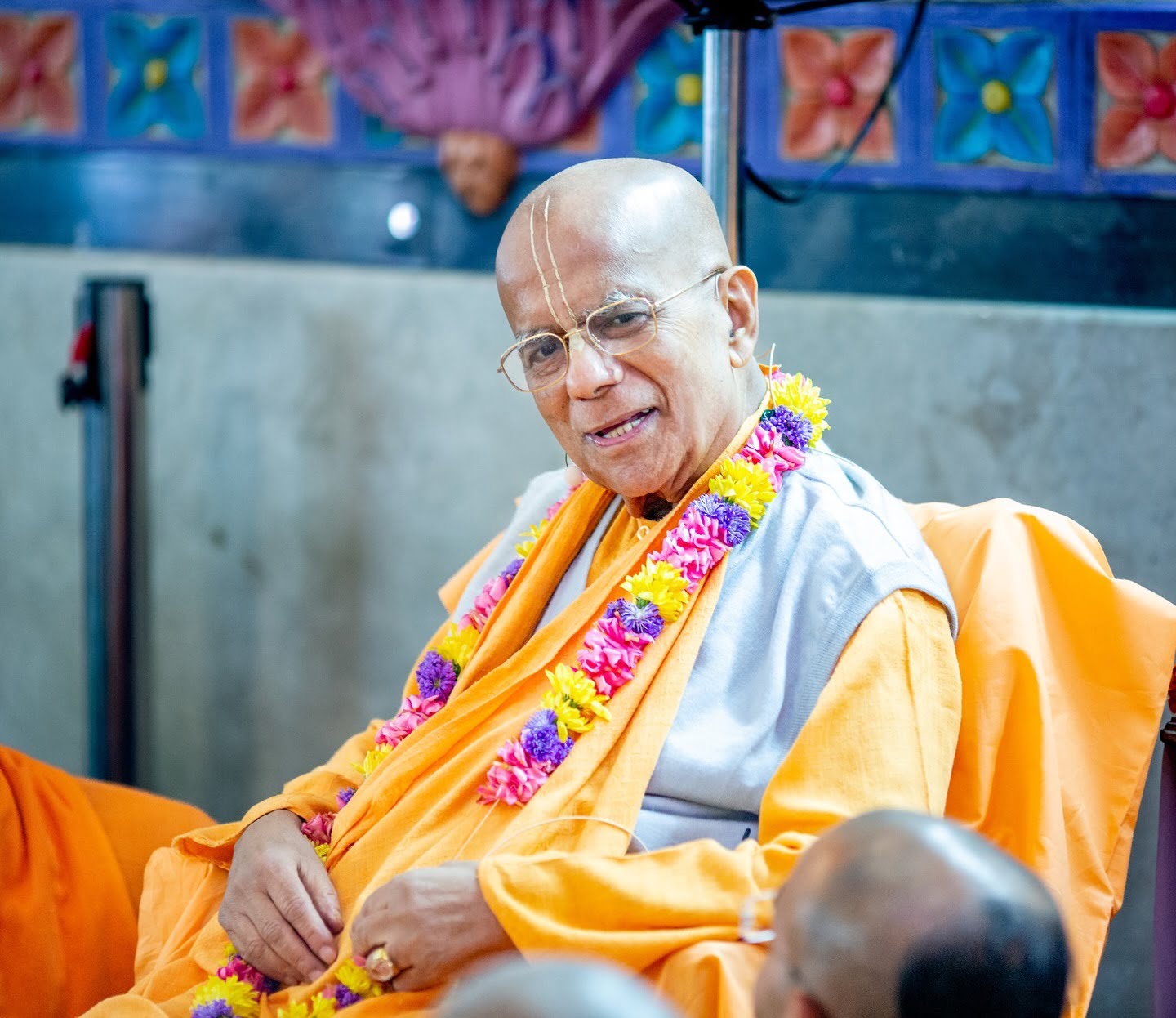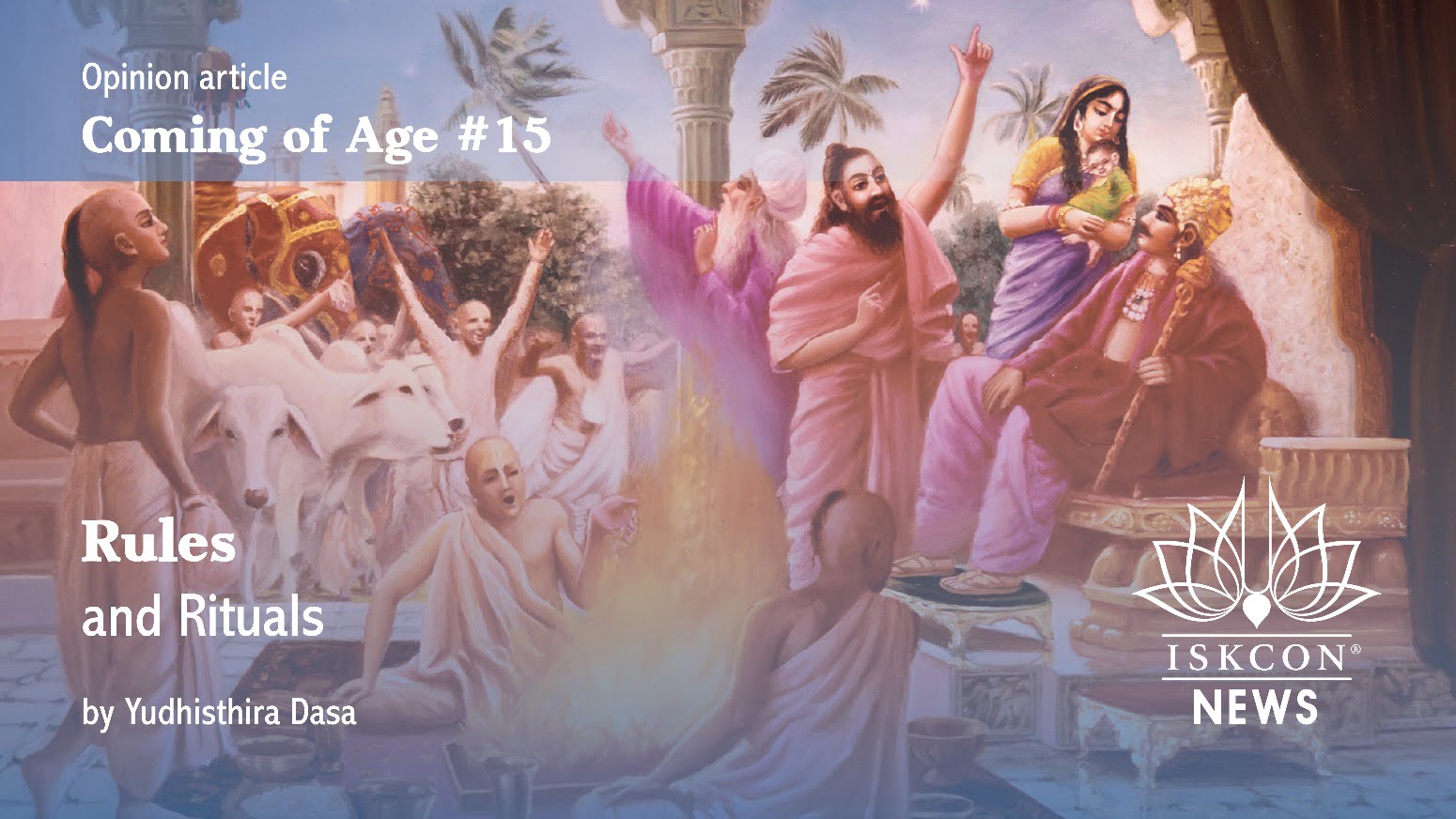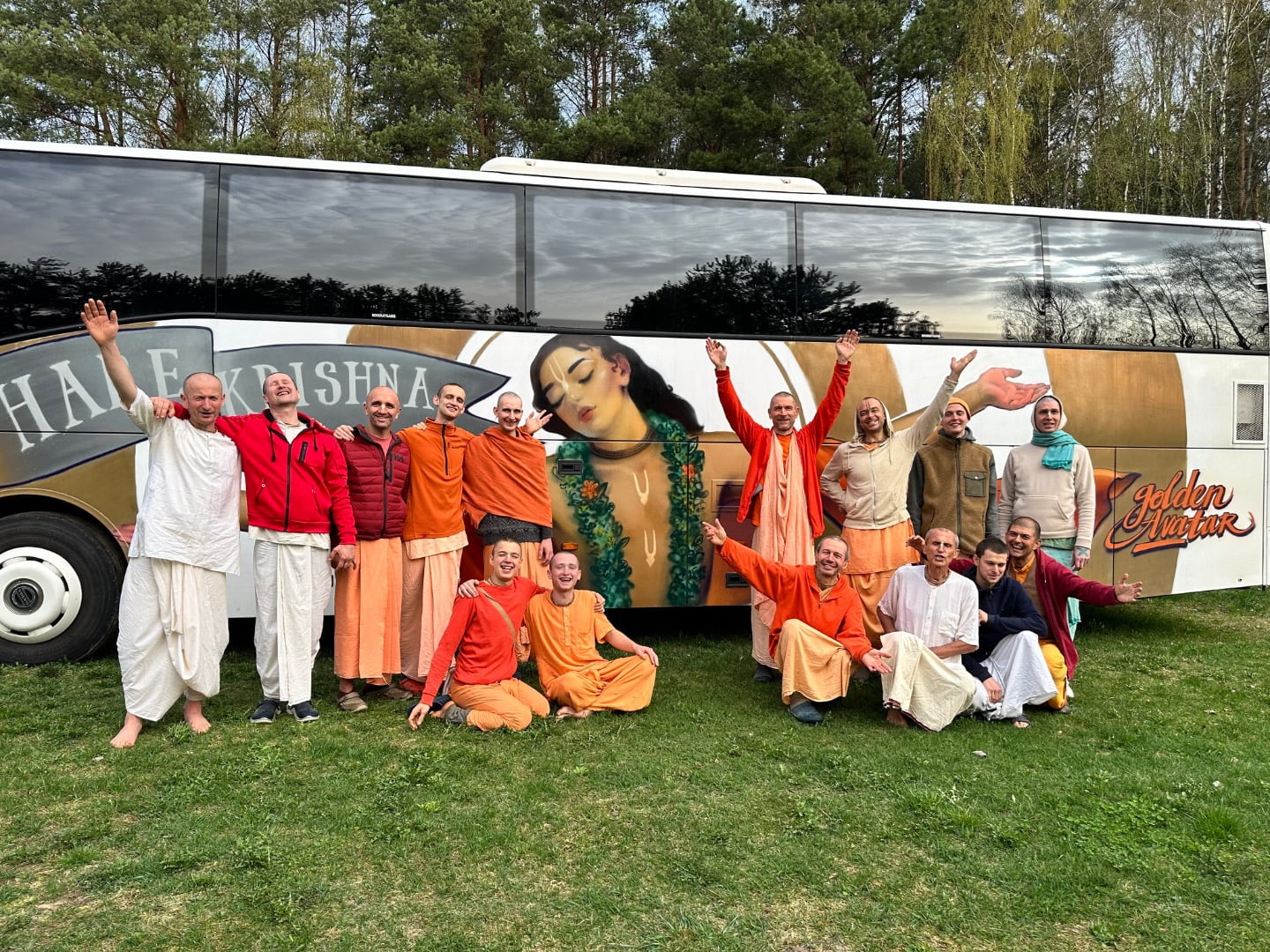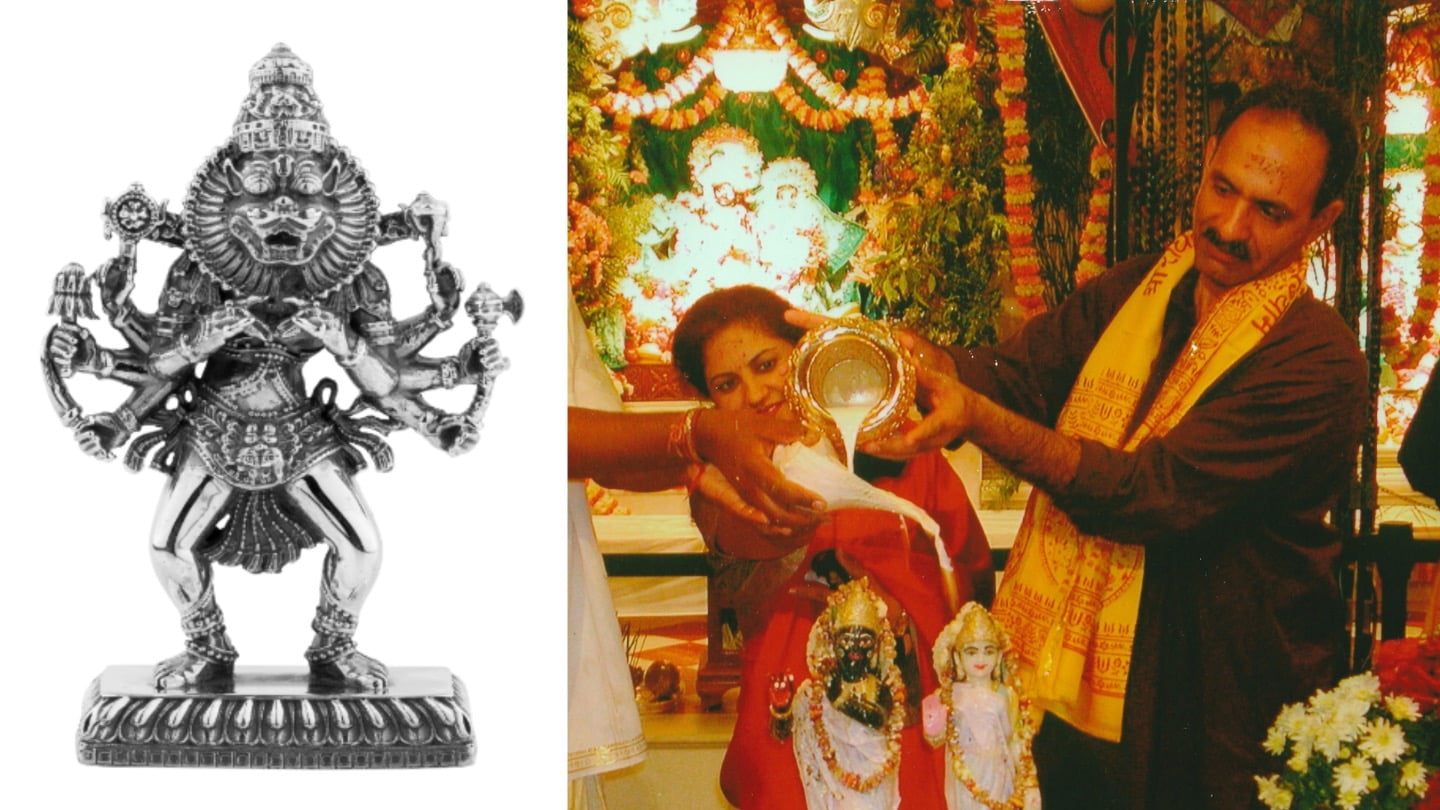New BBT Book Inner Yoga Takes Practitioners Deep Into the Spiritual Core of the Yoga Tradition
By Madhava Smullen | Dec 08, 2017

Bhaktivedanta Book Trust imprint Ferryman Books has released Inner Yoga: Entering the Heart of the Tradition, a title aimed at yoga practitioners looking to delve deeper, beyond physical asanas, into the philosophy and ultimate purpose of yoga.
With yoga’s popularity ever on the rise, there’s a huge potential audience for the book. Worldwide, upwards of 250 million people practice yoga. In the U.S. alone there are over 36 million practitioners, up from 20.4 million in just four years. 28 percent of all Americans have taken at least one yoga class at some point in their lives; and according to a 2016 survey, 63 percent of them said they consider yoga to be part of their spiritual practice.
Meanwhile, there’s an increasing number of practitioners who identify with the bhakti path, although so far there have been few books available to help them fully understand that path.
Enter Inner Yoga author Jayananda Das (Janne Kontala), a practitioner since 1992 and an experienced yoga teacher teaching in Helsinki, Stockholm, and now the U.S. Jayananda knows his audience and their needs well.
He decided to write his book when his students began to ask where they could learn more about the roots of yoga philosophy. There were few easily accessible works on the topic, he found, and none that he could really use to teach the purpose of yoga from a bhakti perspective.
Inner Yoga, he hopes, will fulfill these needs for all levels of yogis – from newcomers to seasoned practitioners. He also hopes it will be useful to fellow devotee yoga teachers looking for a book to give their students an in-depth look.
Right from the get-go, and true to its subtitle, Inner Yoga goes straight to the heart of the tradition. “The yoga books we find on bookshelves today discuss a number of things – how to increase your physical and mental well-being, look better, have better sex, lose weight, relax, free yourself from stress, improve concentration … and so on,” Jayananda writes. “The one thing that’s been neglected is the yogi’s relationship with the Absolute. Yet this relationship is not only central to traditional yogic practice, it’s the point.”
Thus as he takes readers through the book, Jayananda describes yogic asanas and breathing exercises, not as an end in and of themselves, but as a way to prepare the body and mind for mantra meditation on the Supreme Person.
He begins in Part One, “The Inner Dimension of Yoga,” by introducing all these concepts, along with philosophical ideas such as the concept that we are not the body but rather spirit.
In Part Two, “Tuning the Instrument: Posture and Breathing,” Jayananda gives step-by-step directions for a number of physical yoga poses to “tune the body” in preparation for meditation. These are illustrated with photographs of well-known Finnish yogi Jani Jaatinen (Gokulacandra Das).
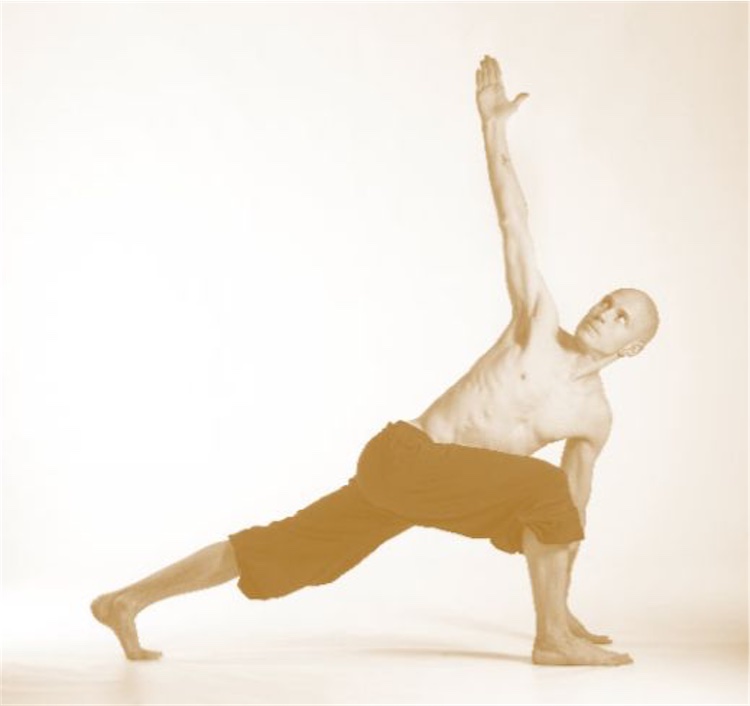
Finnish yogi Jani Jaatinen (Gokulacandra Das) demonstrates a yoga asana in one of the photos from the book
To keep readers’ eyes on the goal, each exercise comes with an “inner dimension” to meditate on while doing the asana. For example, along with Ashva Sanchalanasana, or “revolved side angle pose,” Jayananda cites the metaphor used in the Bhagavata Purana of the passenger sitting on a chariot driven by five horses, each of which represents one of the five senses. The reins represent the mind and the driver the intellect. Jayananda uses this metaphor to explain how we can use yoga to control our mind, develop discerning intelligence, and thus tame our wild senses, bringing us steadily toward the spiritual realm.
In Part Three, “Prana and Breathing,” Jayananda goes into more detail about controlled breathing. Breathing is the main source of prana, or vital force, and has an intimate connection to our mind. This practice, Inner Yoga teaches, helps to keep the mind still and focused while meditating.
Part Four is an introduction to meditation, discussing why to meditate (to control the mind); what to meditate on (the Supreme); and how mantra meditation is the most effective means of meditation because it fully engages the mind.
Part Five, “Practicing Mantra Meditation,” then gives the reader a series of mantras to chant, beginning with “Om,” going on to a number of other Vaishnava mantras, and culminating in the Hare Krishna mantra. Jayananda also discusses how to establish a daily practice of mantra meditation.
Finally, Part Six, “Addressing Obstacles to the Path,” explains the yamas, or self-regulating behaviors, such as nonviolence, truthfulness, freedom from covetousness, and freedom from greed; and the niyamas, or positive personal practices, such as cleanliness, contentment, austerity, spiritual education, and surrender to the Supreme, which help one on the yoga path.
Inner Yoga has already been published by Basam Books in Jayananda’s native Finland, where it received very good reviews. In a review that appeared on the largest nonaffiliated yoga website in Finland, Ville Saarinen, an independent yoga reviewer, praised many aspects of the book and wrote, “Reading Inner Yoga is a pleasant experience. You get a sense of the author’s broad learning and experience derived from a long-time personal practice. The book is written with devotion; the text breathes enthusiasm.”
Showing Inner Yoga’s potency, the first person to read it in draft form – a seriously practicing yoga student and a publishing professional – became a devotee and now chants sixteen rounds a day, is reading Srila Prabhupada’s books, and has now been initiated in ISKCON.
Meanwhile in the U.S., devotee yoga teachers such as Keli Lalita Reddy and Raghunath Cappo are considering the book for their classes, and have received positive responses from students. Inner Yoga has also been used successfully in a number of yoga teacher trainings – an encouraging development, as yoga teachers can influence countless students in how they think about yoga.
The book’s editor, Kaisori Dasi, hopes the devotee community at large will support the book and realize just how impactful it can be. “Many yoga philosophy books are inaccessible to readers; Inner Yoga is hands-on, accessible, and the kind of book people interested in yoga are likely to pick up before they discover or read the Bhagavad-gita,” she says. “Inner Yoga introduces a number of concepts from the Gita and can serve as a bridge to Srila Prabhupada’s books.”
ISKCON gurus have also praised the book, including Sacinandana Swami, who wrote: “Inner Yoga is bringing back the original, spiritual dimension into yoga, thus freeing it from the cage of modern perspectives. Thus it adds a unique contribution, which will enliven the yoga practices with the heart of yoga.”
He concludes: “I wish this book many open-minded readers who are ready to explore the deeper spiritual dimensions of yoga.”
* * *
Inner Yoga is available now in the U.S. from https://www.bbtbooks.org/inneryoga
And in Europe from:https://blservices.com/product/inner-yoga-entering-heart-tradition/








